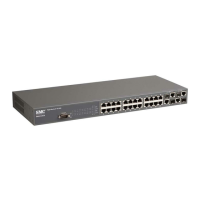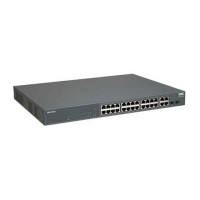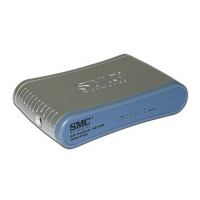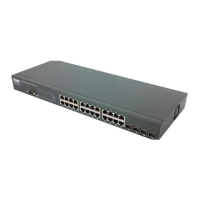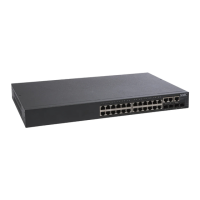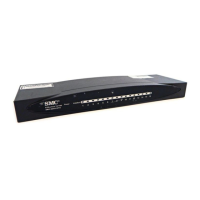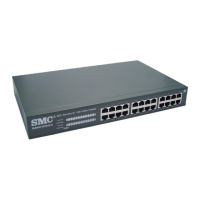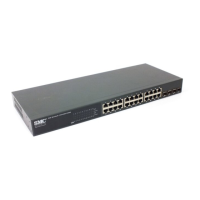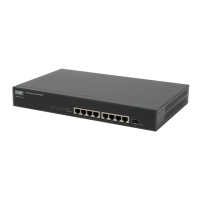CLASS
-
MAP
32-3
Notes: 1. You can configure up to 16 rules per Class Map. You can also
include multiple classes in a Policy Map.
2. You should create a Class Map (page 32-3) before creating a
Policy Map (page 32-5). Otherwise, you will not be able to
specify a Class Map with the class command (page 32-6) after
entering Policy-Map Configuration mode.
class-map
This command creates a class map used for matching packets to the
specified class, and enters Class Map configuration mode. Use the no form
to delete a class map and return to Global configuration mode.
Syntax
[no] class-map class-map-name [match-any]
• match-any - Match any condition within a class map.
• class-map-name - Name of the class map. (Range: 1-16 characters)
Default Setting
None
Command Mode
Global Configuration
Command Usage
• First enter this command to designate a class map and enter the Class
Map configuration mode. Then use the match command (page 32-4)
to specify the criteria for ingress traffic that will be classified under this
class map.
• Up to 16 match commands are permitted per class map.
• The class map is used with a policy map (page 32-5) to create a service
policy (page 32-10) for a specific interface that defines packet
classification, service tagging, and bandwidth policing.
